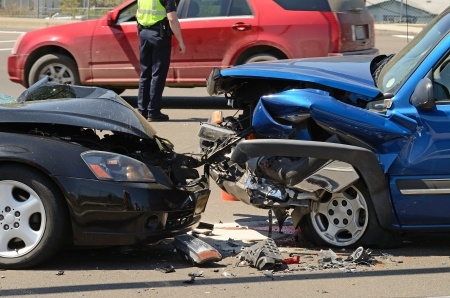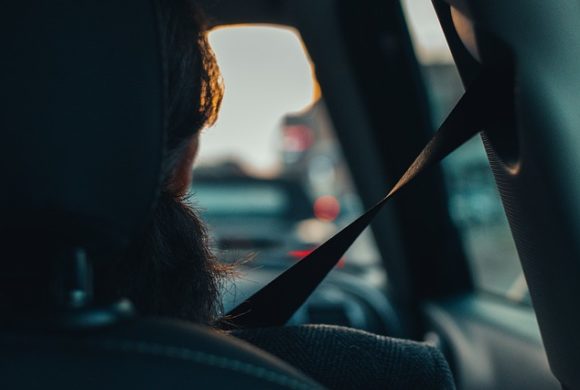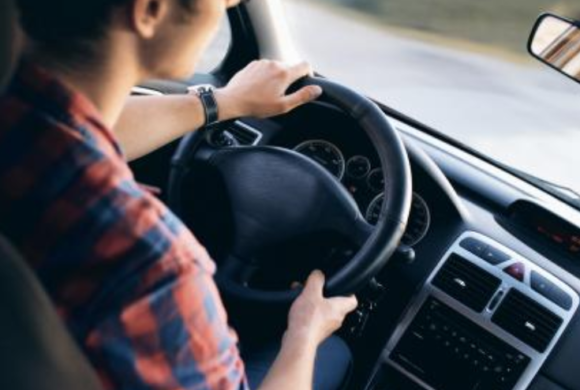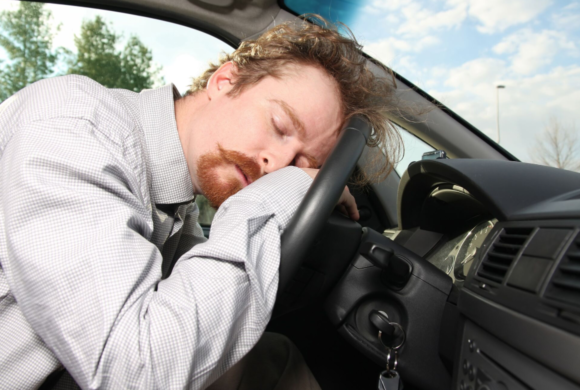
by Queener Law | Jan 22, 2018 | Auto Accident, Tennessee
Economically disadvantaged people are much likelier to be killed in motor vehicle accidents than their more advantaged counterparts due to unsafe roads, inadequate safety features in older cars and hindered access to trauma care. This inequality between disadvantaged and wealthier people has grown over time. The largest decreases in deaths have happened among people who have the highest levels of education while the biggest increases in deaths have happened among people who are older than 25 and who have less than a high school diploma.
Fatalities Among Wealthy People Versus Poor
In a study that was published in the American Journal of Epidemiology, researchers found that motor vehicle fatalities overall fell from 1995 to 2010. However, the poor were much likelier to be the victims of traffic accidents than were people who were wealthier. In 1995, disadvantaged people were 2.4 times likelier to be killed in a traffic accident than people who were wealthier. In 2010, the inequality had increased. Poor people were 4.3 times likelier to die in crashes than people who had more money.
The inequality has also been found in Nashville. From 2008 to 2012, the rate of deaths for pedestrians who lived in areas in which more than 25 percent of the population suffered poverty was 12.6 deaths per 100,000 people. For people who lived in areas with between 15 and 25 percent poverty, the fatality rate for pedestrians was 8.6 deaths per 100,000 people. Nationally, people who lived in areas with less than 15 percent poverty had pedestrian fatality rates of 3.6 per 100,000 people.
The Problem
People who are poor may live in areas with poor road conditions and that have fewer crosswalks, streetlights and other safety features. They are also likelier to own older cars that do not have modern safety features installed in them. Their cars may also be cheaper vehicles that have poor crash test ratings. Finally, poor areas have fewer trauma centers, and poor people may not receive treatment quickly enough after their collisions.

by Queener Law | Jan 8, 2018 | Auto Accident, Tennessee
When a motor vehicle collision occurs in Tennessee, all drivers are required to exchange important information, but some drivers refuse to provide the required information despite the law. The refusal to exchange essential information can be considered a hit-and-run. Victims of car accidents in which the drivers will not exchange their information may be able to enlist the help of law enforcement, an auto accident attorney, or their insurance company to track down the other driver and his or her insurance information.
Why Do Drivers Refuse to Give Information?
Drivers may refuse to provide their information for several reasons. They might not have insurance or a driver’s license. They might also be driving stolen cars or vehicles they didn’t have permission to drive. Some drivers may also already have multiple accidents on their records and withhold information to avoid higher insurance premiums. Finally, some drivers may be reticent to provide their information because they are under the influence of drugs or alcohol. No matter what the reason might be, it is best for people to avoid getting into a confrontation with the drivers and instead to take action to protect themselves.
What to Do When Drivers Refuse
When drivers refuse to provide their information, people should call the police. They should also remain calm and gather as much evidence as they can. Accident victims should also take photographs of the accident scene that clearly show the damage to both vehicles. Drivers should write down the license plate number, make and model of the other vehicle. If there are witnesses to the accident, they should write down their names and contact information. People should report the accidents to their own insurance companies. The companies may be able to identify the drivers from the license plate numbers and then obtain their insurance information. Even if the drivers will not initially provide their information, they may be more willing to give it when the police arrive. If the driver is uncooperative, people should simply do what they can to gather evidence and wait for law enforcement to arrive on the scene.

by Queener Law | Dec 27, 2017 | Auto Accident, Colorado, Kentucky, Tennessee
Because car manufacturers tend to design their vehicles to pass the existing safety tests, the Insurance Institute for Highway Safety recently instituted new tests that rate cars for passenger safety. In the past, manufacturers had focused on driver safety since that was what the tests looked for. The IIHS asserts that it is important to improve passenger safety so that it is equal to the safety standards imposed for drivers.
IIHS Safety Tests
The Insurance Institute for Highway Safety performs tests each year on newly released vehicle models. The tests are influential and let customers understand how safe the different models are so they can make informed purchasing decisions. Because of the importance of these tests, vehicle manufacturers tend to design their vehicles to pass them. In the past, the tests have focused on the safety of drivers. Recently, however, the IIHS has been concerned about making certain that the manufacturers also design their vehicles to be equally safe for passengers. It added passenger-side front crash tests to its safety testing regimen this year.
Test Results
The IIHS tested 13 vehicles with its new passenger side 40 mph frontal crash test. Of the vehicles that were tested, 10 received good ratings from the IIHS. Out of the remaining three, the Volkswagen Jetta was rated as acceptable while the Chevrolet Malibu and the Volkswagen Passat received ratings of marginal. The IIHS recommends that manufacturers optimize the safety of their airbags and headrests to equalize the safety of vehicles for passengers as well as drivers.
While enhanced safety measures won’t prevent all motor vehicle injuries from occurring, they can help to minimize the risks of serious injuries or fatalities when accidents happen. The IIHS designs its tests so that consumers can use the results as one factor in their decisions about which vehicles to purchase. People who are in the market to purchase new cars may now have access to more accurate safety ratings due to the changes. Because car manufacturers are aware that consumers pay attention to IIHS ratings, they might be led to add enhanced features to their vehicles to make them safer for all passengers.

by Queener Law | Nov 13, 2017 | Auto Accident, Colorado, Kentucky, Tennessee
The Centers for Disease Control and Prevention reports that approximately 90 people die each day in the United States due to motor vehicle crashes. That number is almost double the number of roadway deaths of any other high-income country. Between 2000 and 2013, the U.S. reduced highway deaths by approximately 31 percent. Many analysts agree that vehicle crash fatalities could be further reduced in the U.S. by adopting proven strategies.
Who is at highest risk?
According to a report by the World Health Organization (WHO), 90 percent of crash-related deaths occur in low- and middle-income countries. In high-income countries like the United States, people from lower socioeconomic levels are more likely to be involved in a fatal car crash. Young males are three times more likely to die in a vehicle crash than young females.
Common causes of vehicle deaths
To effectively reduce the number of highway deaths, it is important to understand the causes. Doing so can help individuals, vehicle manufacturers and lawmakers address safety issues to minimize the risk of crashes and prevent serious injuries and deaths when accidents do occur.
- Speed is directly related to both the likelihood of having a crash and the probability that deaths will occur in the accident. A personal injury attorney can advise pedestrians or passengers who have been injured due to speeding of their rights and options.
- Driving under the influence of alcohol and other psychoactive drugs accounts for nearly one-third of all U.S. traffic-related deaths. A person driving after taking amphetamines is five times more likely to be in a fatal accident than someone who hasn’t.
- Proper use of safety equipment can significantly reduce fatalities. Wearing a motorcycle helmet reduces the risk of death in an accident by 40 percent. Wearing a seat belt reduces the risk of death for front seat passengers by as much as 50 percent.
- Distracted driving is an evolving problem as new technologies emerge. Drivers using phones are four times more likely to be in a crash. Drivers using hands-free devices are not much safer.
What can be done?
Erin Sauber-Schatz, Ph.D., M.P.H. is a team leader for the CDC’s National Center for Injury Prevention and Control. Erin says 10,000 lives could be saved every year by eliminating alcohol-impaired driving. An additional 3,000 deaths could be prevented by increasing seat belt usage to 100 percent.

by Queener Law | Oct 27, 2017 | Auto Accident, Tennessee
Safety advocates are calling for more safety testing of autonomous vehicles before they are released to the market in Tennessee and elsewhere. Recently, the advocates’ efforts were rewarded in the Senate. A senatorial committee included some of the recommendations of the Advocates for Highway and Auto Safety in a pending bill that would govern the manufacture and release of autonomous vehicles. The bill originally would have exempted many autonomous vehicles from the safety testing requirements of the National Highway Traffic Safety Administration, something that the safety experts decried. If the bill ultimately passes, more safety testing will be required before the manufacturers will be able to release the vehicles for sale on the market.
Safety Testing Recommendations
The Advocates for Highway and Auto Safety lobbied members of the Senate Commerce, Science, and Transportation Committee to limit the number of allowed exemptions from safety standards for autonomous vehicles in the bill. They also asked that the Department of Transportation is required to conduct more safety evaluations of exempt AVs before they agree to a larger release of the vehicles. Other provisions that the advocates lobbied for include mandating the publication of safety evaluation reports of AVs by their manufacturers, the inclusion of alert systems to prevent people from forgetting children behind in cars and the inclusion of safeguards for cybersecurity issues.
The group received backing from several senators, and the bill passed the committee on a bipartisan basis. The safety recommendations from the Advocates for Highway and Auto Safety was included in the markup of the bill, leading the organization to claim a victory in its lobbying efforts. The organization says that driverless vehicles should not be released on a mass basis until the manufacturers can show that they are safer than cars that are controlled by human drivers.
Autonomous vehicles show promise in their potential to greatly reduce injury and fatality accidents, but it is important to make certain that they are safe before they are made available on the mass market. The bill would lead to more on-road testing of the vehicles, and the inclusion of the additional provisions may help to make the testing safer for the public.
While driverless cars may lead to a drop in the number of accidents, some are still bound to happen. A Nashville car accident lawyer may help accident victims who are injured in accidents with AVs.

by Queener Law | Aug 11, 2017 | Auto Accident, Tennessee
New technology is under development to reduce accidents caused by drowsy driving in Tennessee and elsewhere, which claim the lives of 6,000 people in the U.S. each year. The device is worn on the wrists of drivers, and it uses biometric data to sense when they are beginning to get drowsy. If they show these signs, the device will vibrate. If the drivers then start to fall asleep, the device sends electrical pulses that shock the drivers awake so that they can get off of the road. Some of the cases that a Nashville car accident lawyer handles involve drowsy driving crashes that have caused serious injuries or deaths when the drivers fall asleep behind the wheel.
How the Drowsy Driving Technology Works
The entrepreneur behind the company Creative Mode became concerned about the problems of drowsy driving after his friend fell asleep at the wheel and crashed into a tree, causing serious injuries. The entrepreneur then began working to create a new device that could help drivers to remain awake. He came up with a wearable device that he named Steer. Drivers wear the device on their wrists while they drive. After first taking a baseline reading, Steer takes biometric readings of the drivers, including heart rate and sweat production.
If a driver’s heart rate drops below the baseline reading by 10 beats per minute and the sweat secretion drops by one unit, the wearable device will vibrate to alert the driver that he or she is drowsy. If the driver’s heart rate subsequently falls by an additional three beats per minute and the sweat secretion decreases by another unit, the device sends gentle shocks that are strong enough to wake the driver up.
The idea behind using the shocks is that they increase the levels of serotonin in the brain, which causes drivers to awaken. The entrepreneur says that even if the devices wake the drivers up, they should pull off of the road and get some sleep to prevent automobile accidents rather than attempting to continue driving. The device has generated significant interest and more than 100 investors on Kickstarter are currently backing it. It is expected to retail at $230. Drivers can currently purchase Steer on Kickstarter for $130. A Nashville car accident lawyer may help victims who have been injured by drowsy drivers.






